江苏大学霍鹏伟团队: 简单光催化体系实现有机污染物→CO₂→CO 利用
研究背景
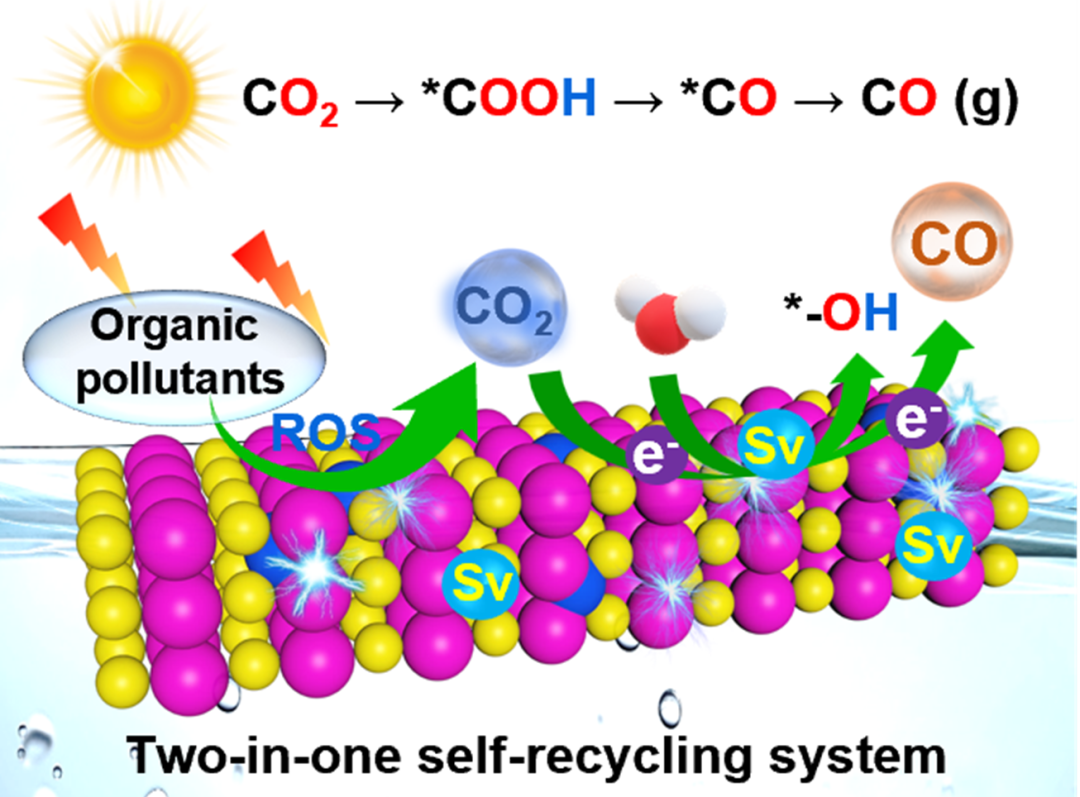
霍等人利用金属铈(Ce)掺杂策略,通过简单的水热法制备了含有丰富硫空位的硫化镉(Ce-doped CdS,CnCS)光催化剂。研究表明,CdS 中掺杂的 Ce3+/Ce4+ 位点促进了电荷的分离和转移,周围增强的电荷密度提高了 CO2 还原活性;丰富的硫空位有助于加速水分子的分解并降低中间产物转化能垒。值得注意的是,二合一系统中,最优样品(C4CS)的光还原活性比纯 CdS 增加了 5 倍。最优样品的 CO 产率是单一 CO2 还原系统的 11.2 倍。该工作利用二合一碳自循环体系高效矿化有机污染物并选择性制备 CO 燃料,为有机污染物高效矿化和 CO2 还原研究提供了一定的参考。
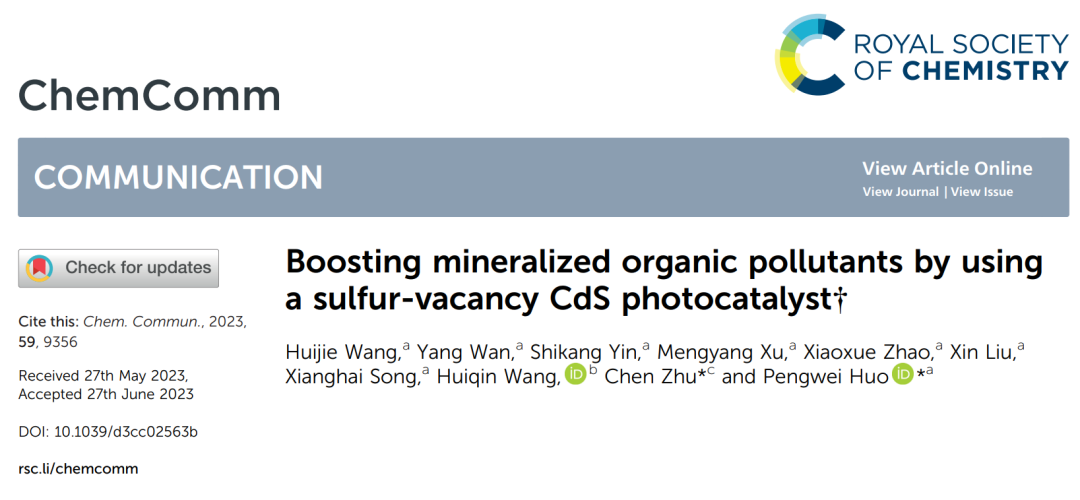
研究亮点
碳自循环二合一光催化体系-同时矿化有机污染物及还原 CO2 制备燃料。
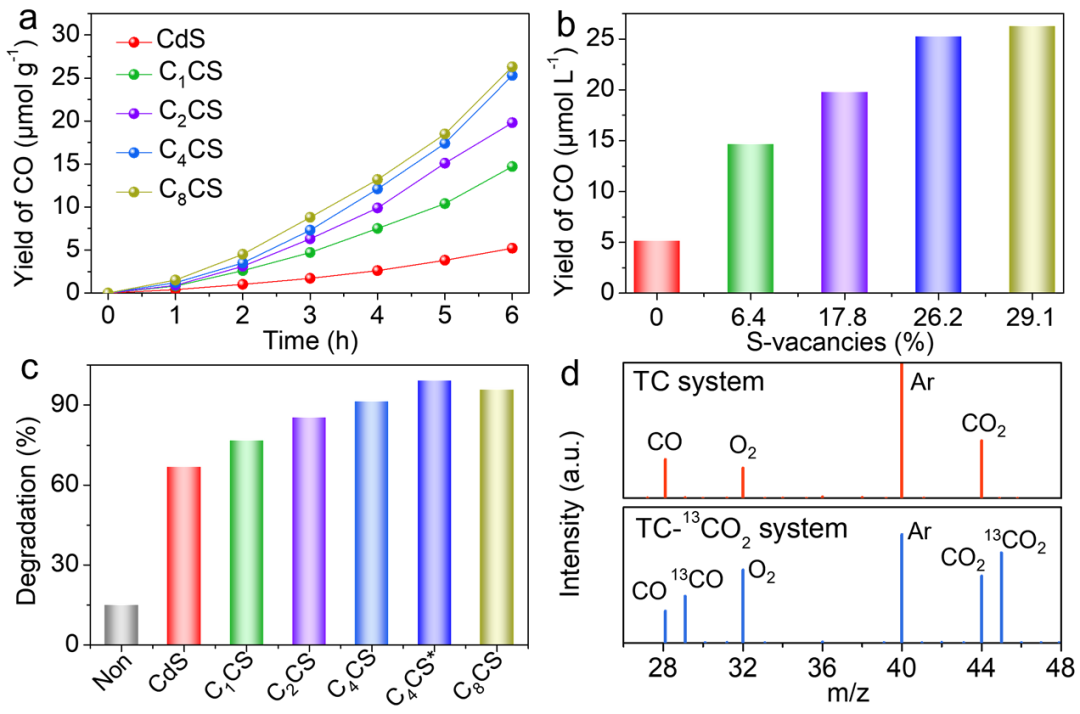
Fig. 1 (a) CO production rates of pristine CdS and CnCS. (b) The comparison of the CO yield using the pristine CdS and CnCS with different S-vacancy concentrations. (c) Photocatalytic degradation rates of TC solution over blank, pristine CdS and CnCS over 6 h (C4CS* stands for the reaction time being 12 h). (d) Mass spectra of the TC solution system and TC solution-13CO2 system over C4CS after 2 h photocatalytic reaction under the Ar atmosphere.
亮点2
通过 Ce 掺杂策略,在硫化镉中锚定了大量的 Ce3+/Ce4+ 位点-促进载流子分离。
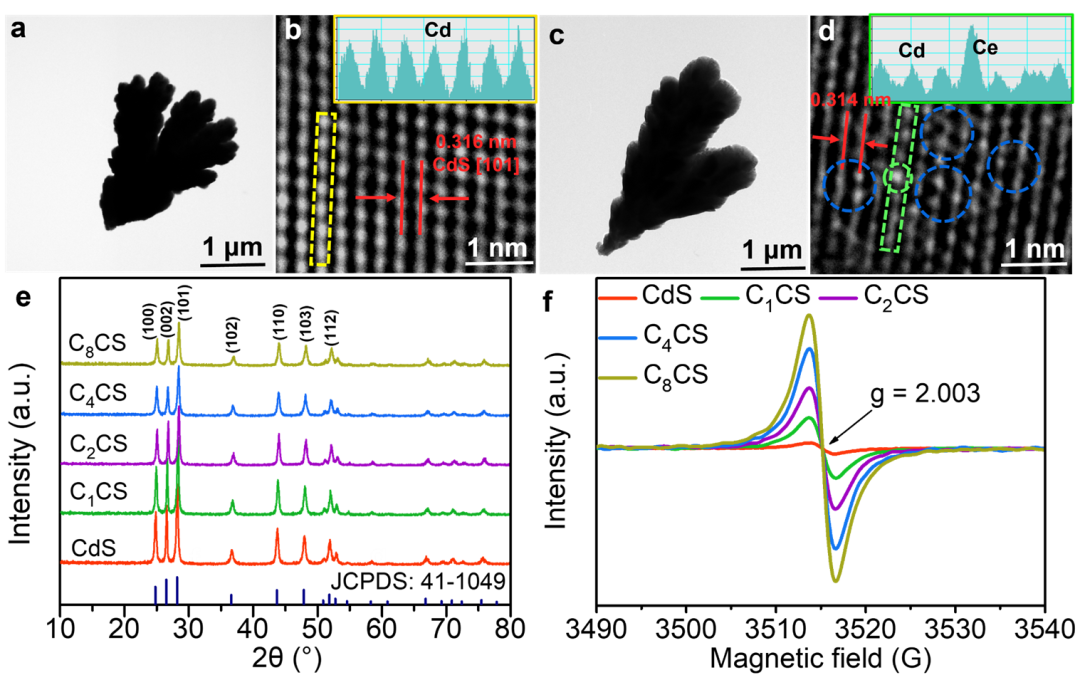
Fig. 2 TEM images of (a) pristine CdS and (c) C4CS. HRTEM images of (b) pristine CdS and (d) C4CS (inset figures are the intensity profile of the selected region). (e) XRD spectra and (f) EPR spectra of pristine CdS and CnCS.
亮点3
掺杂策略造成硫化镉中存在大量的硫空位-降低反应活化能,增强 CO2 还原活性。
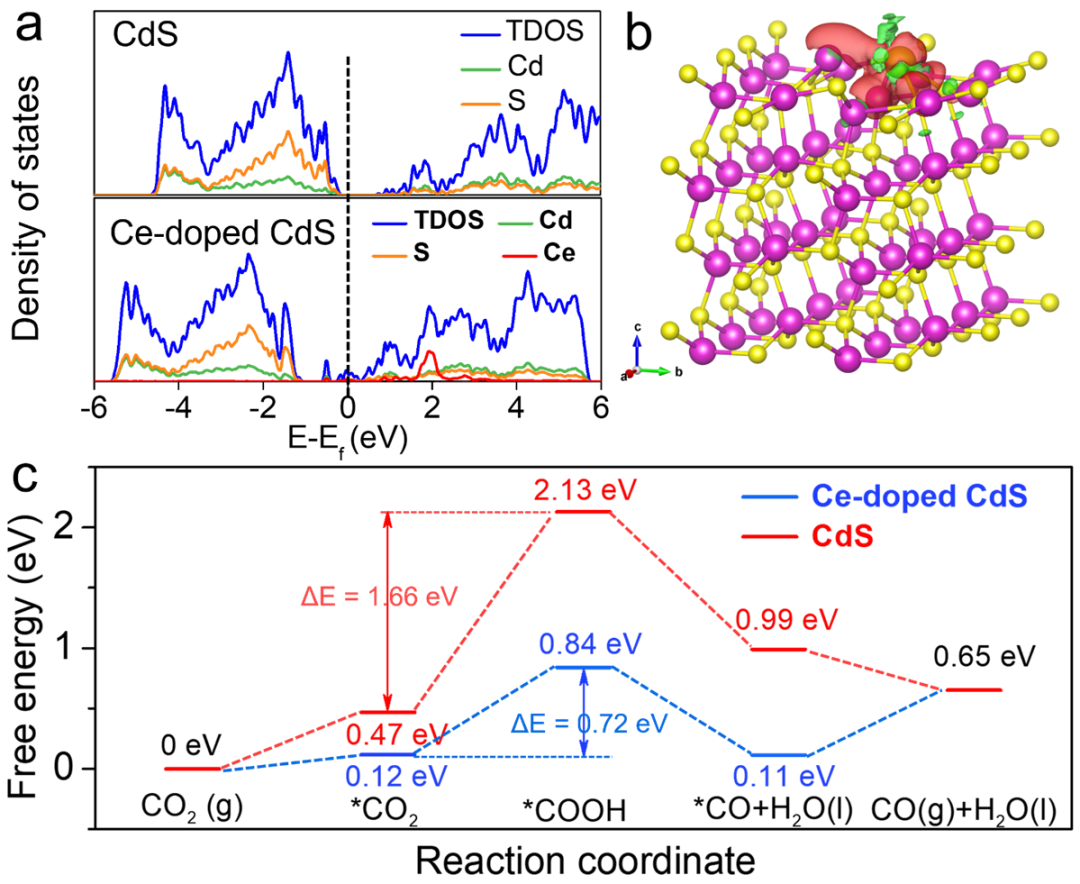
Fig. 3 (a) The DOS of pristine CdS and Ce-doped CdS (the dashed line represents the Fermi level). (b) The charge density difference of Ce-doped CdS (red electron cloud represents the accumulation of electrons; green electron cloud represents electron consumption). (c) Gibbs free energy diagrams of the photocatalytic CO2 reduction process for pristine CdS and Ce-doped CdS.
论文信息
Boosting mineralized organic pollutants by using a sulfur-vacancy CdS photocatalyst
Huijie Wang, Yang Wan, Shikang Yin, Mengyang Xu, Xiaoxue Zhao, Xin Liu, Xianghai Song, Huiqin Wang, Chen Zhu*, Pengwei Huo*(霍鹏伟,江苏大学;朱陈,九州大学)
Chem. Commun., 2023, 59, 9356-9359
https://doi.org/10.1039/D3CC02563B
声明:本文仅用于学术文章转载分享,不做盈利使用,如有侵权,请及时联系小编删除。




